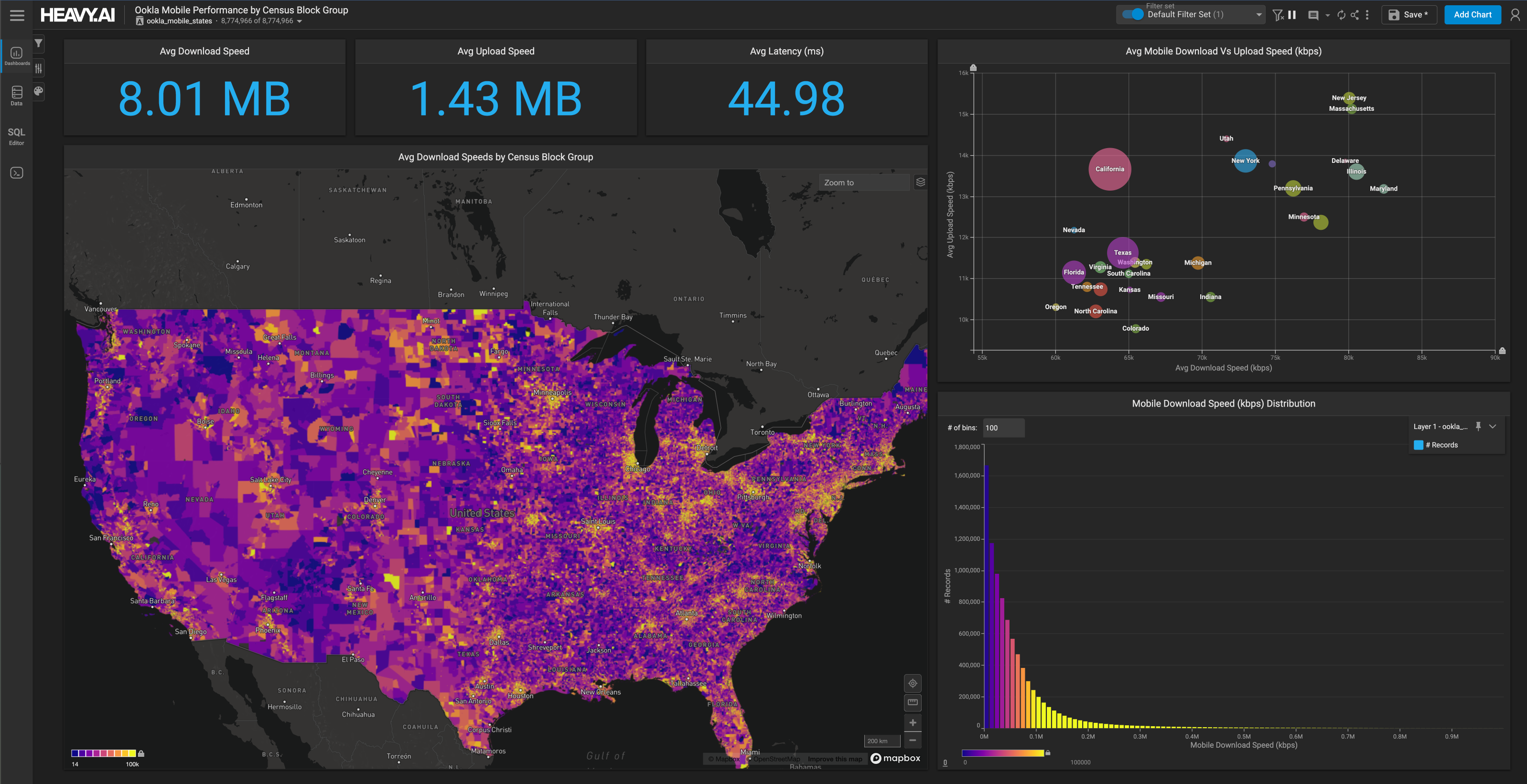
Empowering Discovery through Activity-Based Intelligence and AI
Try HeavyIQ Conversational Analytics on 400 million tweets
Download HEAVY.AI Free, a full-featured version available for use at no cost.
GET FREE LICENSE
Download ABI Whitepaper
Modern intelligence challenges—from climate instability to cyber threats and gray-zone conflicts—are increasingly complex and ambiguous. The proliferation of data from diverse sources, including IoT devices and sensors, has transformed our environment from one of "big data" to "data ubiquity." However, effectively harnessing this data tsunami to uncover meaningful patterns is hindered by limitations in computational resources and traditional analysis methods.
Activity-Based Intelligence (ABI) emerged to address these challenges. By integrating data from multiple sources and intelligence disciplines (Multi-INT), uncovering subtle, relational interactions without traditional starting points such as names, dates or other tippers. While ABI has proven invaluable in revealing hidden networks, the approach demands significant computing power and analytical resources, becoming increasingly impractical amid exploding data volumes. Manual, or even CPU powered, analytics simply cannot keep up.
To unlock ABI's full potential, HEAVY.AI combines ABI methodologies with advanced AI capabilities, leveraging GPU-accelerated analytics and generative AI to discover hidden correlations that traditional methods overlook. This post outlines ABI's key principles and describes how HEAVY.AI enhances ABI's effectiveness in today's complex, data-rich environment.
ABI: Definitions and Core Principles
Developed during the Global War on Terrorism, ABI is a multi-INT analytical methodology that integrates multiple, diverse and comprehensive data sets to identify patterns of activity, transactional relationships, and hidden networks. ABI’s four core principles include:
- Georeference to Discover: Spatial and temporal indexing of all data sources for correlation and clustering.
- Integration before Exploitation: Immediate integration of complete data sources to identify relationships early, fostering comprehensive analysis.
- Data Neutrality: All data sources are treated equally to avoid overlooking crucial insights due to bias.
- Temporal Neutrality: Analysis disregards the chronological order of data collection, highlighting patterns that might otherwise go unnoticed.
By integrating data proactively, , ABI allows analysts to discover previously unknown relationships and activities not visible through conventional analysis.
Challenges: Abundant Data, Diminishing Insights
Despite ABI's promise, the exponential increase in data volume—expected to reach 175 zettabytes annually by 2025—has outpaced the capabilities of legacy CPU based analysis tools. Analysts often find themselves limited by computational constraints, forced to narrow analytical scope temporally or spatially, thus undermining ABI's foundational principles. Consequently, most data collected is discarded without thorough analysis, undermining the effectiveness of intelligence efforts.



Enhancing ABI and Artificial Intelligence (AI) with HEAVY.AI
AI dramatically enhances ABI by overcoming human and computational limitations:
- Enhanced Data Processing: AI can process large datasets rapidly and comprehensively, significantly increasing discovery potential without the need for a starting point.
- Automated Correlation Discovery: AI identifies subtle and extensive relationships that human analysts might overlook due to resource constraints and data complexity.
The HEAVY.AI platform addresses ABI's computational challenges with GPU-powered parallel processing, enabling rapid analysis and instant visualization of vast, integrated datasets. Additionally, the HeavyIQ component utilizes generative AI to enable natural-language querying of datasets, uncovering subtle correlations beyond traditional methods for non-technical users.
Practical Use Case: Maritime Security ("Dark Ships")
A compelling example of ABI and AI in action is maritime security, specificially the phenomenon of "dark ships"—vessels disabling tracking systems,. Using HEAVY.AI, an analyst integrates AIS (Automatic Identification System) data, radio frequency (RF) emissions, social media posts, and satellite imagery/data (SAR). By visualizing these massive datasets, the analyst identifies vessels behaving suspiciously, correlating gaps in AIS with complementary RF emissions and contextual SAR or, possibly, social media data. This multi-layered analysis reveals consistent patterns linking specific vessels to potentially illicit actions based on the behavior discovered through this technique.
HeavyIQ further refines analysis by identifying cross-dataset correlations through natural language queries, revealing links between maritime activity and social media posts or AdTech data, which manual approaches would likely miss.

Conclusion
By combining ABI's multi-INT methodology with HEAVY.AI's advanced computational and AI-driven
analytical capabilities provides analysts unprecedented ability to explore massive datasets efficiently. By enabling proactive data integration and seamless exploration across domains, ABI empowered by AI becomes essential for addressing today's multidimensional intelligence challenges, transforming the way intelligence communities understand and respond to emerging global threats.



